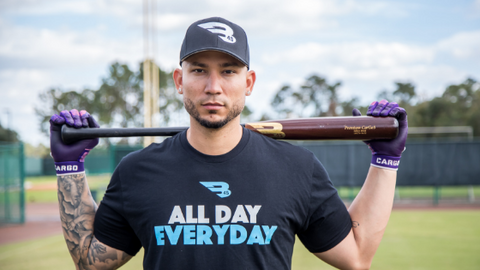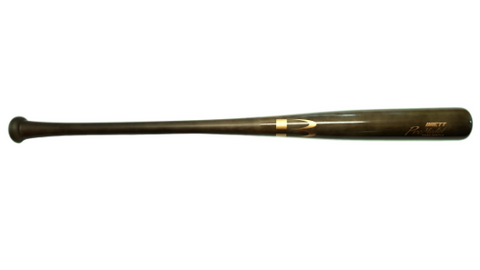At most all levels of play, the crack of a bat is traded in for a ping whenever a batter makes contact. For a variety of reasons, safety most of all, most youth leagues and play up through high school and even university use aluminum or some sort of metal bat.
That classic crack of a bat we all hear about alludes to professional baseball (and some collegiate leagues), which maintain the tradition of wooden bats. When compared head-to-head, metal bats provide more power, a faster swing, and a larger sweet spot than wood bats, which offer better mechanics, contact, and just make hitters better. Many advanced high school players will play in summer leagues that use wood bats as a preparation for the next level of play.
If you’re looking to move into the wood bat world, you may have some questions. Chief of all is which type of wood to use. Here’s a breakdown of some common wood types and what they offer:
Maple
Perhaps the most common type of wood in professional baseball, about 75-80% of bats used in the Major Leagues are maple. Maple is a hard, dense wood, making it perfect for the (literal) beating it will take on the diamond.
The composition of the wood actually makes it stronger over time, as the impact of the ball compresses the wood into itself. Unfortunately, it can also absorb a lot of moisture and subsequent weight gain. This can lead to some players, most notably Ichiro Suzuki, storing their bats in a humidifier to keep them in pristine, dry condition.
Maple is sturdy enough to last a while, but may not be as forgiving when struck on the end of the bat or in on the hands. That’s a pain you may not be ready for.
Ash
Ash was the original wood bat, before maple came in to town and became the popular kid in school. Where maple is sturdy and hard, ash is light and flexible. What you sacrifice in strength and durability, you make up in what many players believe is a “whip” that comes with ash bats. This basically means your bat flexes and snaps back into shape, giving more bat speed and perhaps a better strike on the ball.
As it is a weaker wood, Ash comes with a risk of flaking or splintering, especially for younger players not used to working with wood bats. Many young players unconsciously twist their wrists when swinging, which can cause a ball to strike on the face surface of the bat, which can result in splinters and flaking.

B45 Pro Select Stock Baseball Bat
Birch
Perhaps the best of both the maple and ash worlds, birch is a soft wood that won’t flake. Soft, again, means the bat comes with a level of “whip” that can help hit the ball harder and farther. Its composition is such that a young player learning to keep their wrist straight won’t flake the face off the bat or risk sending splinters into everyone’s eyes.
As a softer wood, birch oftentimes needs to be broken in. It will dent and compress as it is used, and therefore harden, much like the much harder maple bat.
Bamboo
A newer addition to the wood bat world, bamboo offers a blend of strength and tension unparalleled by the other options. Arguably the strongest wood available on the bat market, bamboo will be more durable than most other options.
Innovation and value comes at a price, however, Bamboo bats can be significantly more expensive than other, more traditional options.

Brett Bros Pro Model S318 Composite Maple Baseball Bat
Composite
Full disclosure, composite bats aren’t 100% wood bats. They do, however, behave like wooden bats, but come with an added measure of durability. The goal of many manufacturers these days is safety, and a composite bat significantly limits the chances of breaking a bat, therefore keeping players safer.
They also tend to come with a warranty, which can be a welcome change to those on a budget.
#base2basesports
#base2basesports


